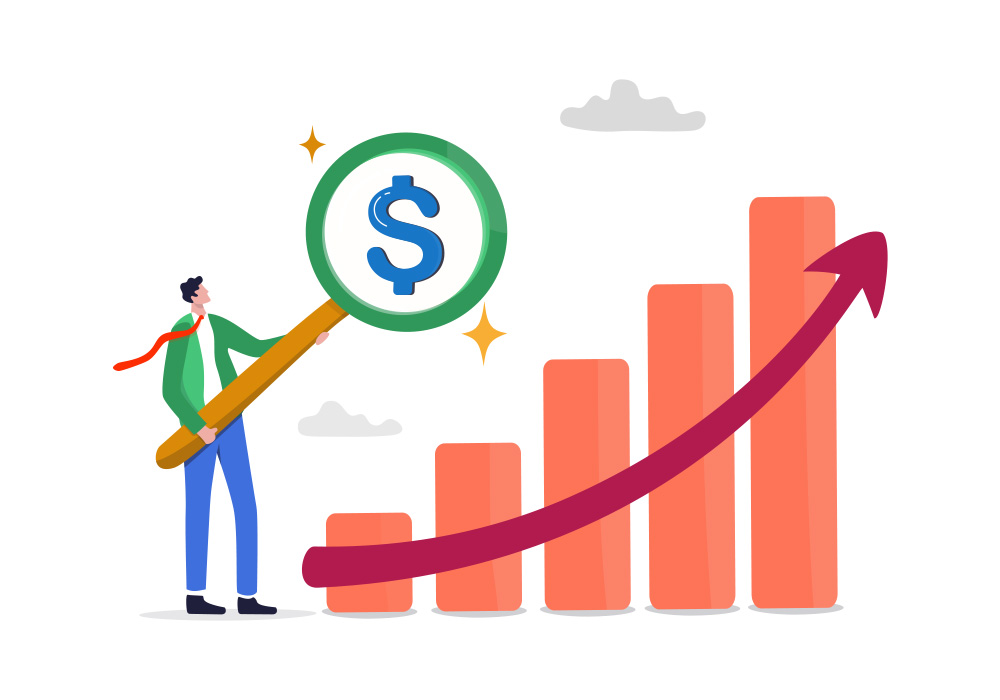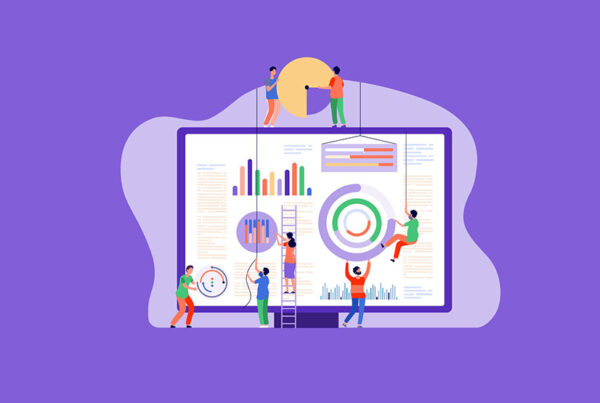BDR Commission Plans
There are a variety of different metrics used for BDR commission plans. At some companies, reps are paid a commission based on the number of marketing qualified leads (MQLs) or sales qualified leads (SQLs) generated. At other companies, the variable compensation is tied to the dollar value of sales pipeline or sales bookings generated – a percentage of the annual recurring revenue (ARR) or total contract value (TCV).
In this article we will share an example BDR commission policy for a variable compensation plan tied to the number of leads generated. The same policy could be used for MQLs or SQLs. In this policy we will assume the BDRs are attempting to secure leads with human resource leaders at enterprise and middle market accounts to sell talent acquisition (recruiting) software.

Types of Leads
What types of leads are BDRs eligible for commission on? Some companies only pay BDR leads for outbound. Others pay on both inbound and outbound. It is increasingly common for inbound leads to be automatically booked by AI agents or by offering the prospect a self-service calendar scheduling option.
The policy for BDR-generated leads, including follow-up on marketing campaigns such as webinars, events, and content downloads, should also be clearly defined in the commission policy. Marketing leads are tricky because they don’t neatly fit into the inbound or outbound categories.
Example Commission Policy
BDRs will receive a commission for each lead generated through their prospecting efforts and attributed to them in the CRM system. Commission is paid at different rates for three types of leads:
- Inbound leads – Generated from the contact forms, pricing inquiries, and demo requests submitted on the company website. Conversational interactions (chatbots). These are often referred to as hot leads.
- Outbound leads – Generated through cold calling, emailing, or LinkedIn interactions. Gifting programs may be used as an added incentive to complement outreach. These are often referred to as cold leads.
- Hybrid leads – Generated from following up on contacts generated from marketing campaigns such as website content downloads, tradeshow booth scans, and webinar registrations. These are often referred to as warm leads.
Commission Rates
What rates are paid for each lead generated? Is the rate different for inbound than outbound? What do BDR managers, directors, or VPs get paid for meetings booked by the reps that work for them? Is the BDR leadership team paid a per lead commission or are they paid on achievement of the overall team target? The commission policies should be documented to avoid any confusion.
Example Commission Policy
Per lead commission rates are aligned with the typical level of effort required to book the meeting. Inbound leads generally require less effort than cold outbound leads. The level of effort for hybrid leads falls in the middle. Converting leads from marketing campaigns requires a higher level of effort than generating cold outbound leads, but less effort than inbound.
BDRs are paid the following commission rates per lead
- Inbound: $
- Hybrid: $$
- Outbound: $$$
Team leaders are paid a percentage of the base commission rates paid to the individual BDRs:
- Team Leads = %%%
- Managers = %%
- Director/VP = %
Qualified Lead Definition
What type of companies can BDRs book a meeting with? Any company, or only those matching your Ideal Customer Profile (ICP)? If you have an account-based marketing model, you may need a defined list of target accounts.
The same question needs to be answered for the buyer personas as well. Which job titles and levels of seniority qualify? If you’re selling recruiting software, you probably don’t want to meet with buyers outside of human resources.
Example Commission Policy
BDRs are commissioned on qualified leads that result in a 25-30 minute discovery call with an account executive and a prospective customer. The prospective customer must be a target buyer persona at an ideal customer profile.
- Chief People Officer or Chief Administrative Officer
- Senior VP/VP of Human Resources
- VP/Director of Compensation and Benefits
- VP/Director of Talent Acquisition
- VP/Director of Training and Development
- VP/Director of Diversity, Equity, Inclusion Programs
Ideal customer profile accounts are defined as:
- Vertical Industries – Consumer Products, Retail, Industrial Manufacturing
- Headquarters location in North America or Western Europe
- Employee count – 1000 or greater
Non-Qualified Leads (NQL)
Companies with ABM models or tightly defined ICPs and buyer personas also need to consider the potential scenarios that could arise with inbound leads. Visitors to the website who fill out demo request forms or sign up for free trials may not be a good match for the ICP or job title of a “qualified lead.” You will want to carefully spell out if and when these types of inbound inquiries will be eligible for commission payments.
Example Commission Policy
Inbound leads and those generated from marketing campaigns may not fit into the ideal customer profile and buyer personas identified above for “qualified” leads. These are called non-qualified leads. A non-qualified lead is a meeting with a buyer persona outside the targets outlined above (e.g., payroll, finance, accounting) and the ICP defined above (e.g., < 1000 employees, alternative industry).
Per lead commissions can be paid for non-qualified inbound and hybrid leads under the following circumstances:
● Account Executive agrees to the meeting with the prospect
● Sales or marketing leadership
BDR Eligibility for Commissions – Exception Scenarios
Leads with Multiple Sources
One of the most complex issues with BDR commission is leads with multiple sources. For example, what if a BDR has an outbound sequence active on prospect that signs up for a demo on the website? Is that an inbound or outbound lead? Should the BDR get commission? What about a lead with a buyer that responds to a BDR outbound sequence, but is also engaged with a channel partner? Does the BDR team get commission or should the partner team get credit?
These scenarios get complicated. It is a good idea to spell out in detail the criteria under which commissions will be paid for multi-attribution leads.
In the example policy excerpt below, we illustrate how to communicate policy for inbound leads with closely correlated outbound activity.
Example Commission Policy
It is common for inbound leads to be closely correlated with outbound prospecting. If an inbound lead is generated within seven calendar days of an outside prospecting engagement, then the SDR will be paid at the hybrid rate. The SDR is responsible for providing the supporting documentation to prove that they were prospecting the same contact at the same account.
Example 1:
A prospect requests a demo on the website on September 15th. The same person at the same account was being prospected by a BDR using outbound sequences throughout the month of September. The demo request was within 24 hours of a recent email sent to the prospect on September 14th. The BDR would receive commission at the hybrid rate for the lead.
Example 2:
A prospect requests a demo on the website on September 15th. A different person at the same account was being prospected by a BDR using outbound sequences throughout the month of September. The BDR would not receive a commission for the lead.
Example 3:
A prospect requests a demo on the website on September 15th. The same person at the same account was being prospected by a BDR using outbound sequences throughout the month of July. The BDR would not receive a commission for the lead.
Multiple Leads at Same Account
Can BDRs book multiple meetings with different buyer personas at the same account? Large enterprise accounts often have multiple divisions and business units that purchase independently. In these scenarios, most companies would want the BDRs to prospect in each different division and get as many meetings as possible. However, what about buyers in the same division who are potentially involved in the same deal? Should a BDR be allowed to book meetings with multiple members of the buying committee? Or does that responsibility fall to the account executive?
Example Commission Policy
At many prospects, there is a buying committee rather than an individual decision maker. The BDR is responsible for securing a meeting with a single key buyer persona (e.g., human resources) in the account. After the initial discovery call occurs, the account executive is responsible for securing meetings with other members of the buying committee (e.g., finance, sales, operations).
BDRs are not eligible for commission on meetings with a second buyer persona at accounts with an active opportunity.
Exceptions to the policy can be granted by sales or marketing leadership.
Leads at Current Customers
Can BDRs book meetings with buyers at your current customers? Large enterprise accounts often have multiple divisions and business units that purchase independently. Suppose the customer success team has an active relationship with only one out of ten different business units at a $10B account. Who is responsible for prospecting into the other nine divisions? Does the CSM ask for warm introductions? Or can the BDR perform cold outreach? And, of course, is the BDR eligible for commission if both the CSM and BDR are reaching out to the same buyer in another division?
Example Commission Policy
At larger customers, there may be multiple divisions or business units that purchase independently. The customer success team is responsible for securing meetings with new buying groups at current customers. The BDRs are not eligible for commission on meetings with buyer personas at current customers.
Exceptions to the policy can be granted by sales or marketing leadership.
Churned Customer Accounts
Can BDRs book leads with accounts that have churned? If so, is there a time window immediately following the cancellation during which the customer is off-limits to BDRs? At some SaaS companies, the CSM may be responsible for reacquiring lost accounts within the first year after cancellation.
Are BDRs allowed to pursue churned accounts with certain cancellation reasons, but not with others? For example, it may not be the best use of time to pursue accounts that left due to product functionality limitations if the gaps have not been closed. However, accounts that left to obtain better pricing from a competitor might be fair game.
Example Commission Policy
A small percentage of customers will choose to cancel their contract each year. Common reasons for the churn include mergers and acquisitions, insolvency, or financial distress. The company’s current go-to-market strategy is not to re-engage churned customers. BDRs will not be eligible for commission on leads with churned accounts.
Exceptions to the policy can be granted by sales or marketing leadership.
Recently Closed Deals
When do closed-lost opportunities get returned to the BDR team for prospecting? At some companies, these lost deals may be immediately recirculated into the BDR outbound process. At other companies, there might be a 90 or 180-day window during which the account executive continues to follow up with the prospect. These details should be spelled out in the rules of engagement for the GTM team, but are should also be detailed in the commission policy to avoid any confusion.
Example Commission Policy
During active deal cycles, the sales team owns all communications with the prospect. If a deal stalls or the customer becomes unresponsive, the account executive can keep the opportunity open and continue to attempt to re-engage. After a deal is closed and lost in the CRM, ownership of the account is typically transitioned from the sales team to the BDR team.
Prospecting efforts should be temporarily paused after a deal is closed for 180 days. BDRs will not be eligible for commission on leads at an account with a recently closed deal.
Exceptions to the policy can be granted by sales or marketing leadership.
Reschedules and No-Shows
Does the BDR get paid if the prospect accepted the meeting, but does not show up to the scheduled call? At most companies no-shows are not eligible for commission payouts. However, it may depend on who has the responsibility for rescheduling. At many companies the BDR owns the relationship until the initial discovery call is completed. A more complex scenario is when the account executive requests a reschedule.
Example Policy
It is a good idea to document these scenarios in your BDR commission policy.
If the customer requests the meeting to be rescheduled or does not show up to the call, then the BDR is responsible for rescheduling the discovery call. If the meeting cannot be rescheduled, then neither the BDR are not eligible for commission on the lead.
If the account executive requests the meeting to be rescheduled or does not show up to the call, then the BDR is responsible for rescheduling the discovery call. If the meeting cannot be rescheduled, then both the SDR and LDR are eligible for commission on the lead.
Leads booked by Outside Agencies
What happens if an outside appointment scheduling agency gets a meeting at the same account a BDR is prospecting? Some companies use outside agencies to supplement their in-house business development (BDR) teams. In these scenarios, the list of target accounts is divided between the in-house team and the outside agency. However, the account assignments may be updated frequently and it is common for there to be some overlap in the lists. As a result, the two groups might be mistakenly working on the same prospect.
Consider this hypothetical situation – a BDR and an agency rep are both working Walmart. The BDR and the agency rep have each sent several emails and left several voicemails to the target buyers. The agency rep gets a response to one of his/her emails and books a meeting. Does the BDR get commission?
Example Policy
Lead generated by outside appointment setting agencies that are used to augment the company’s lead generation programs are not eligible for commission. Exceptions can be granted by sales or marketing leadership if, for example, the internal BDR team and external agency were targeting the same accounts within seven days of the lead being booked.
Timing of Payment for BDR Commissions
How frequently do BDRs receive their commission payments? Some companies pay once per month. Others might pay in alignment with the payroll schedule, which is typically every two weeks or twice a month.
What criteria must be satisfied for the lead to be paid? Most companies will pay in arrears after the account executive has met with the customer. Some will require certain fields in the CRM system to be updated to reflect that the meeting has occurred.
Example Commission Policy
BDRs will be paid lead commissions once per month in arrears. Commissions are paid for meetings that were completed in the prior month (versus meetings that were scheduled.
Example 1:
Meeting Booked – April 15th
Scheduled Meeting Date – April 30th
Commission is paid – May
Example 2:
Meeting Booked – April 15th
Scheduled Meeting Date – May 1st
Commission is paid – June
Example 3:
Meeting Booked – April 15th
Scheduled Meeting Date – April 30th
Rescheduled Meeting Date – May 5th
Commission is paid – June
Eligibility for Commission Payments after BDRs Leave the Company
What happens when a BDR leaves the company? Are they paid commission for all of the leads that they booked before their last day? Or do they forfeit commissions on leads that are booked, but have not yet met with the sales team?
Example Commission Policy
To be eligible for lead commission or win commission payments, SDRs must be employed at the time of the payment run.
Example 1:
Termination Date: May 15th









